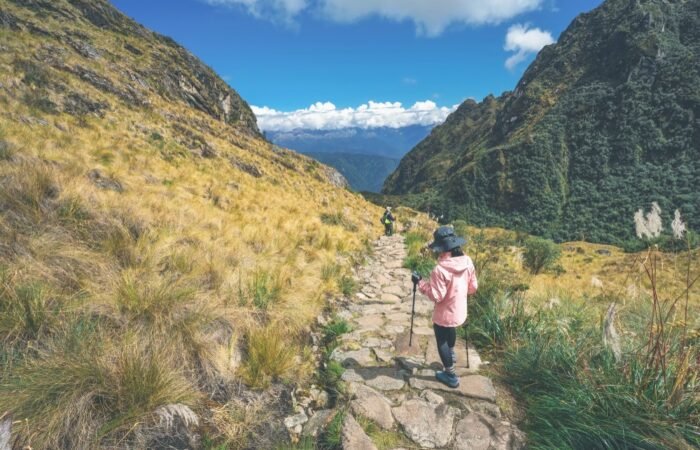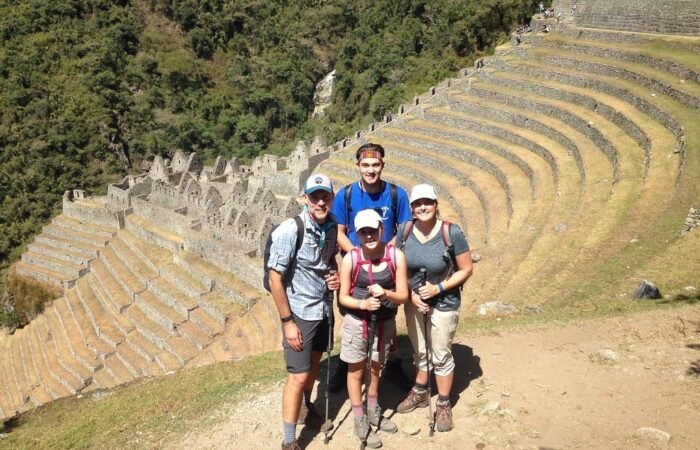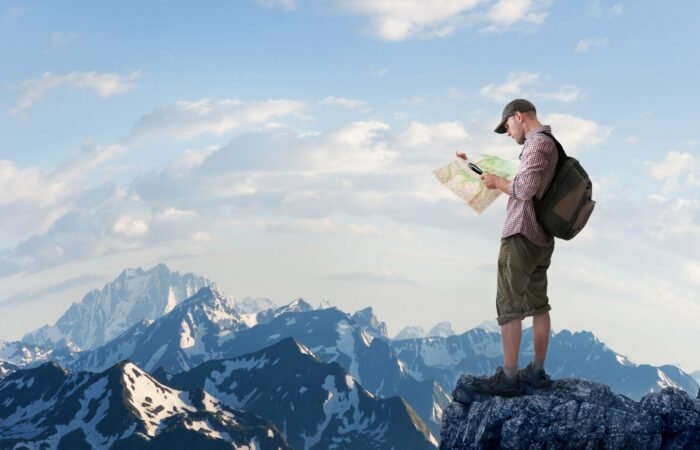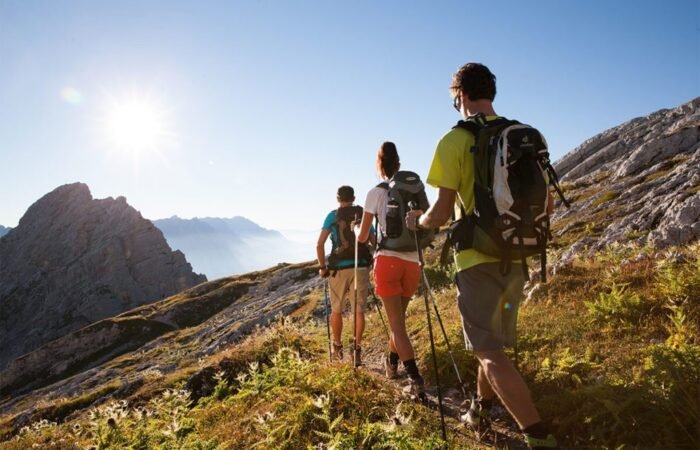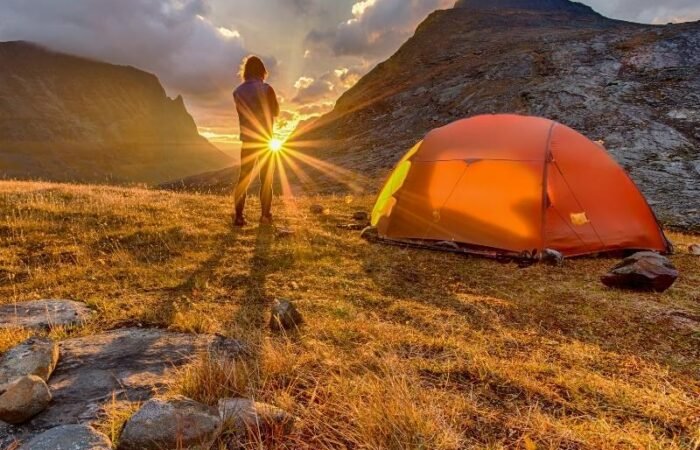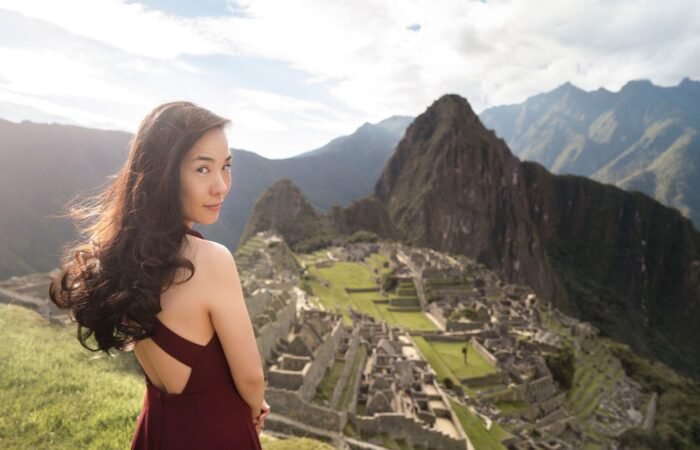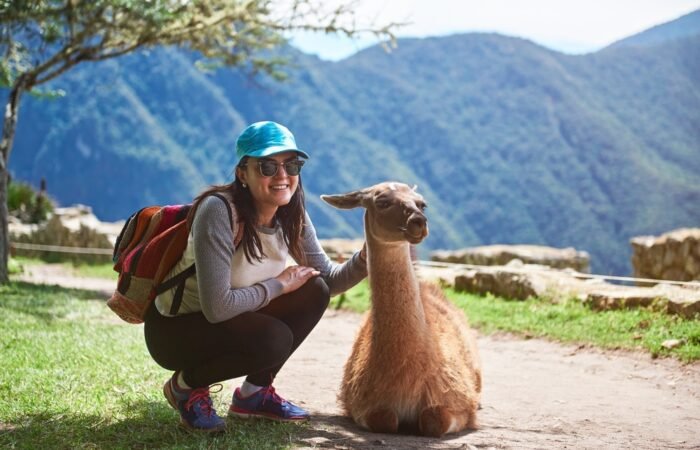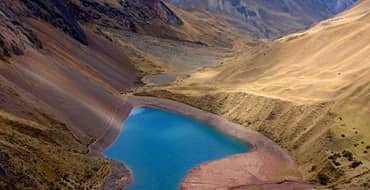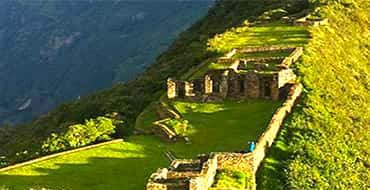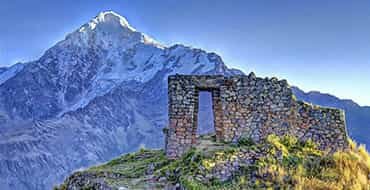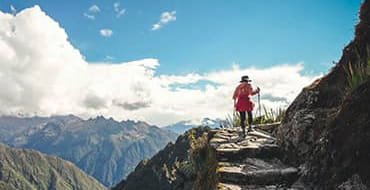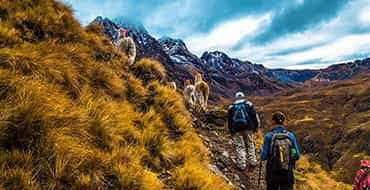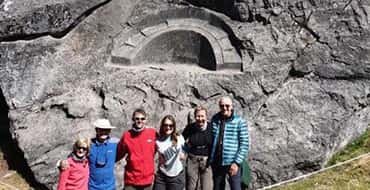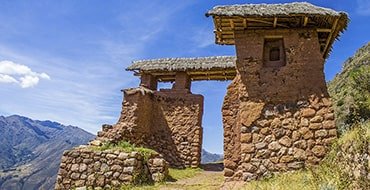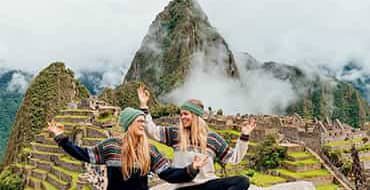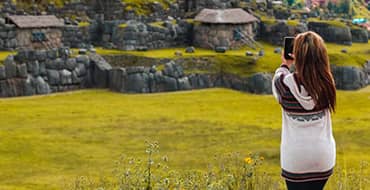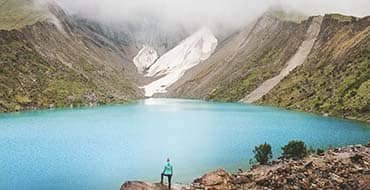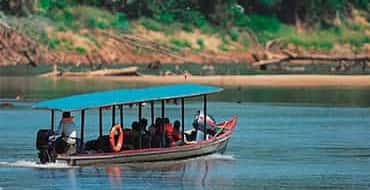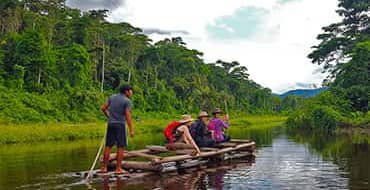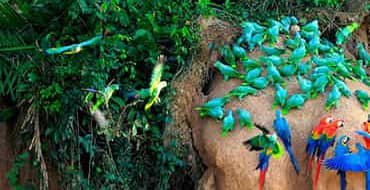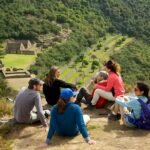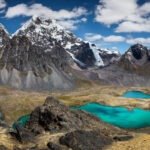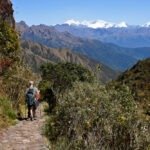

Introduction to Q’eswachaka
Q’eswachaka, often referred to as the last Inca bridge, is a remarkable architectural feat located in the Apurímac region of Peru. Specifically positioned over the Apurímac River, this suspension bridge stands as a testament to the ingenuity of the Inca civilization. Historically, it played a crucial role in connecting various regions, facilitating the movement of people, goods, and military personnel across harsh mountainous terrains. Its strategic importance during the height of the Inca Empire cannot be overstated, as it served to unify and strengthen the far-reaching territories that were once governed by the Incas.
This extraordinary bridge is not merely a relic of the past; it is a vibrant piece of living history. Constructed using traditional techniques that have been passed down through generations, Q’eswachaka is made predominantly from natural fibers, which provide both strength and resilience. These materials are locally sourced, showcasing the sustainable practices of the Andean communities. Notably, the bridge is woven from vast quantities of ichu grass, which is known for its durability, enabling the structure to endure the test of time and the natural elements.


What does Q’eswachaka mean?
“Q’eswachaka” is a word that comes from the Quechua language and consists of two parts: “Q’eswa,” which means “rope” or “cord,” and “Chaka,” which means “bridge.” Therefore, “Q’eswachaka” translates to “rope bridge” or “hanging bridge.”
This bridge is an exceptional example of the ancient Inca suspension bridges that were constructed using traditional techniques and materials. It has been preserved and rebuilt for centuries by local communities, maintaining its connection to the Inca cultural heritage.


Construction Techniques of Q’eswachaka
The construction of Q’eswachaka, the last remaining Inca bridge, exemplifies the ingenuity and deep connection to nature exhibited by the Andean communities. This remarkable structure utilizes materials that are sourced sustainably from the surrounding environment, highlighting the traditional methods that have been passed down through generations. One of the primary components in the construction of Q’eswachaka is woven grass, which plays a crucial role in maintaining the bridge’s integrity and functionality.
Natural fibers, including ichu grass, are harvested and meticulously prepared by skilled artisans. The process involves selecting the right type of grass, which is then dried and woven into tight bundles that lend strength to the overall structure. This technique not only showcases the craftsmanship of the builders but also aligns with the sustainable practices that the Andean communities embrace. The intricate knotting techniques employed during the weaving process are particularly noteworthy; each knot serves a dual purpose of enhancing flexibility while ensuring the overall stability of the bridge.
The construction method of Q’eswachaka is deeply rooted in cultural significance, embodying the principles of resourcefulness and respect for nature. Once built, the bridge requires continuous maintenance to uphold its structural integrity. Community members, united in this endeavor, gather annually to replace worn-out grass and perform necessary repairs, using the same traditional approaches that their ancestors utilized. This annual ritual not only sustains the bridge but also reinforces social bonds among community members, reflecting a shared commitment to preserving their cultural heritage.
Through the careful selection of materials and the employment of time-honored techniques, the construction of Q’eswachaka stands as a testament to both the resilience of traditional practices and the enduring importance of community collaboration in maintaining cultural landmarks.


How it is built
Day 1 – The first day begins with a celebration of Apu Quinsallallawi, just as their ancestors did. At dawn and throughout the celebration, the Ichu material is braided by the community’s women.
Day 2 – The previous bridge is dismantled before implementing the four main ropes for the new bridge, which will be the primary support of the structure. Participants carefully remove the ropes and wooden sections of the old bridge structure.
Day 3 – This is the most intensive stage of restoration. On this day, they lay and braid the bridge floor and side railings. Artisans and community members work together to weave the new ropes used in bridge construction. This process involves using traditional techniques passed down through generations, where ropes are carefully braided and interwoven to form a solid foundation.
Day 4 – The final touches are made, and exhaustive tests are conducted to ensure the bridge is ready and safe for use. Once completed, they celebrate the completion of their project with abundant food and regional dances.
These four days of restoration are a physical and technical effort and an opportunity to strengthen community ties and keep an invaluable tradition alive.


The Annual Restoration Festival
Each June, the Q’eswachaka Bridge becomes the focal point of a vibrant annual restoration festival that epitomizes the rich cultural heritage of the Andean communities in Peru. This festival is not only a celebration of a historic architectural marvel but also serves as a manifestation of community solidarity, cultural identity, and reverence for Pachamama, or Mother Earth. During this event, local residents come together with a shared purpose: to restore the bridge using traditional Inca techniques that have been passed down through generations.
The festival begins with various rituals dedicated to Pachamama, honoring her for providing the community with resources and sustenance. These sacred ceremonies involve offerings of food, drink, and other tokens of gratitude, which are integral to the spiritual dimension of the festival. Participation in these rituals reinforces the communal ties that bind the residents, echoing the harmonious relationship between nature and the local population. As participants engage in these meaningful traditions, they not only pay homage to their cultural roots but also take part in narrating their collective history.
In addition to the spiritual aspects, the festival is marked by a lively atmosphere filled with traditional music and dance, enhancing the sense of communal joy and celebration. Musicians play Andean instruments, while dancers perform age-old folk dances, creating a festive environment that attracts visitors from various regions, all eager to witness this unique event. The communal feasting that follows serves as a culmination of the day’s labor and spiritual devotion, allowing everyone to share in the fruits of their efforts in rebuilding the bridge.
This restoration festival is more than a mere event; it is a reaffirmation of cultural identity and communal heritage. By involving everyone in the process of rebuilding Q’eswachaka, participants strengthen their bonds and ensure that the traditions surrounding the bridge continue to thrive for future generations. Through this remarkable annual gathering, the significance of the Q’eswachaka Bridge transcends its physical structure, embodying the enduring spirit of the Andean people.


Tourism and its Impact on Q’eswachaka
The Q’eswachaka bridge, renowned as the last Inca bridge, serves not only as a historical landmark but also as a focal point for tourism in the region. Attracting visitors from across the globe, the bridge and its stunning surrounding landscapes play a significant role in promoting cultural appreciation and heritage tourism. Tourists are drawn to the bridge not only for its remarkable engineering and aesthetic appeal but also for the deep cultural significance it holds within the Andean community. This influx of visitors has provided substantial economic benefits to the local community, including job creation in sectors such as hospitality, guiding services, and local crafts.
Moreover, tourism has encouraged the preservation of traditional practices associated with the bridge, as the local residents engage in cultural demonstrations and festivals that highlight their heritage. This not only allows the community to take pride in their ancestry but also helps to keep their customs alive for future generations. The economic advantages, however, come with challenges that must be addressed. The potential for environmental impact is a pressing concern as increased foot traffic can lead to degradation of the surrounding landscapes, which are integral to the identity of Q’eswachaka and its significance as a UNESCO-recognized site.
Additionally, there exists a risk of cultural dilution, where the genuine traditions may be overshadowed by the commercial aspects of tourism. Striking a balance between promoting tourism and maintaining cultural integrity is essential for sustainable development in this area. Stakeholders, including local authorities and community leaders, must collaborate to implement strategies that protect both the bridge and the cultural practices associated with it, ensuring that the tourism industry serves as a tool for preservation rather than a detractor from it.


Visiting Q’eswachaka: Practical Tips
When planning a visit to Q’eswachaka, the Last Inca bridge, it is essential to understand the logistics and cultural context to enhance the overall experience. Located in the Apurímac region of Peru, this remarkable site is approximately 100 kilometers from the city of Cusco, making it relatively accessible for tourists. For transportation, several options are available, including guided tours that provide round-trip transportation, private car rentals, or public buses from Cusco to the nearby town of Q’ehue, which is the closest access point to the bridge.
The best time to visit Q’eswachaka is during the dry season, typically from May to October, as this period offers clearer skies and milder temperatures, ideal for exploration. Visitors should be aware that the bridge is reconstructed annually during the Inti Raymi festival, which usually takes place in June. This is a significant cultural event featuring traditional music and dance, allowing visitors to witness the local customs and community participation, thus enhancing the visit.
Upon arriving at Q’eswachaka, tourists should prepare for a short, though somewhat challenging, hike to the bridge, as it is located at an altitude of approximately 3,700 meters. The landscape is characterized by a stunning Andean landscape, and visitors are advised to dress in layers to adapt to temperature fluctuations. Accessibility may be limited for those with limited mobility; the physical effort required should be carefully considered.
Respect for local customs is paramount when visiting Q’eswachaka. Engaging with the local community and showing appreciation for their traditions not only enriches the experience but also honors the cultural significance of the site. Visitors are encouraged to refrain from littering and to seek permission before photographing community members or their homes. Such practices contribute to a more meaningful and respectful visit to this culturally important landmark.


Conclusion: The Lasting Legacy of Q’eswachaka
Q’eswachaka stands as a testament to the ingenuity and perseverance of the Inca civilization. More than merely a bridge, it symbolizes the resilience of a community that has dedicated itself to preserving its heritage for future generations. The meticulous annual restoration of Q’eswachaka not only reinforces the structure itself but also fosters a deep sense of identity and belonging among the local Quechua people. This annual ritual draws not just those within the immediate community but also visitors from afar, creating a shared experience that transcends geographical boundaries.
The cultural significance of Q’eswachaka extends beyond its physical structure; it embodies the values of solidarity and cooperation. By coming together to rebuild the bridge, community members engage in a practice that revives traditional skills, strengthens social bonds, and reinforces a cultural narrative that has survived through centuries. The bridge serves as an educational tool, teaching younger generations about their heritage and the importance of maintaining connections to their ancestors.
It is crucial that we honor and protect historic sites like Q’eswachaka, acknowledging their role in our shared history. The preservation efforts undertaken today ensure that this cultural landmark is not just a relic of the past, but a living symbol that continues to inspire and engage. Ongoing efforts to promote tourism in a responsible and sustainable manner can provide the necessary resources to maintain the site while celebrating its cultural significance.
As we look to the future, it becomes imperative to safeguard the stories and traditions associated with Q’eswachaka. Support for preservation initiatives will help ensure that this remarkable bridge thrives as a symbol of resilience and community for generations to come, affirming its place in the rich tapestry of cultural heritage. Through collective efforts, we can continue to honor the legacy of Q’eswachaka and its vital role in contemporary culture.
